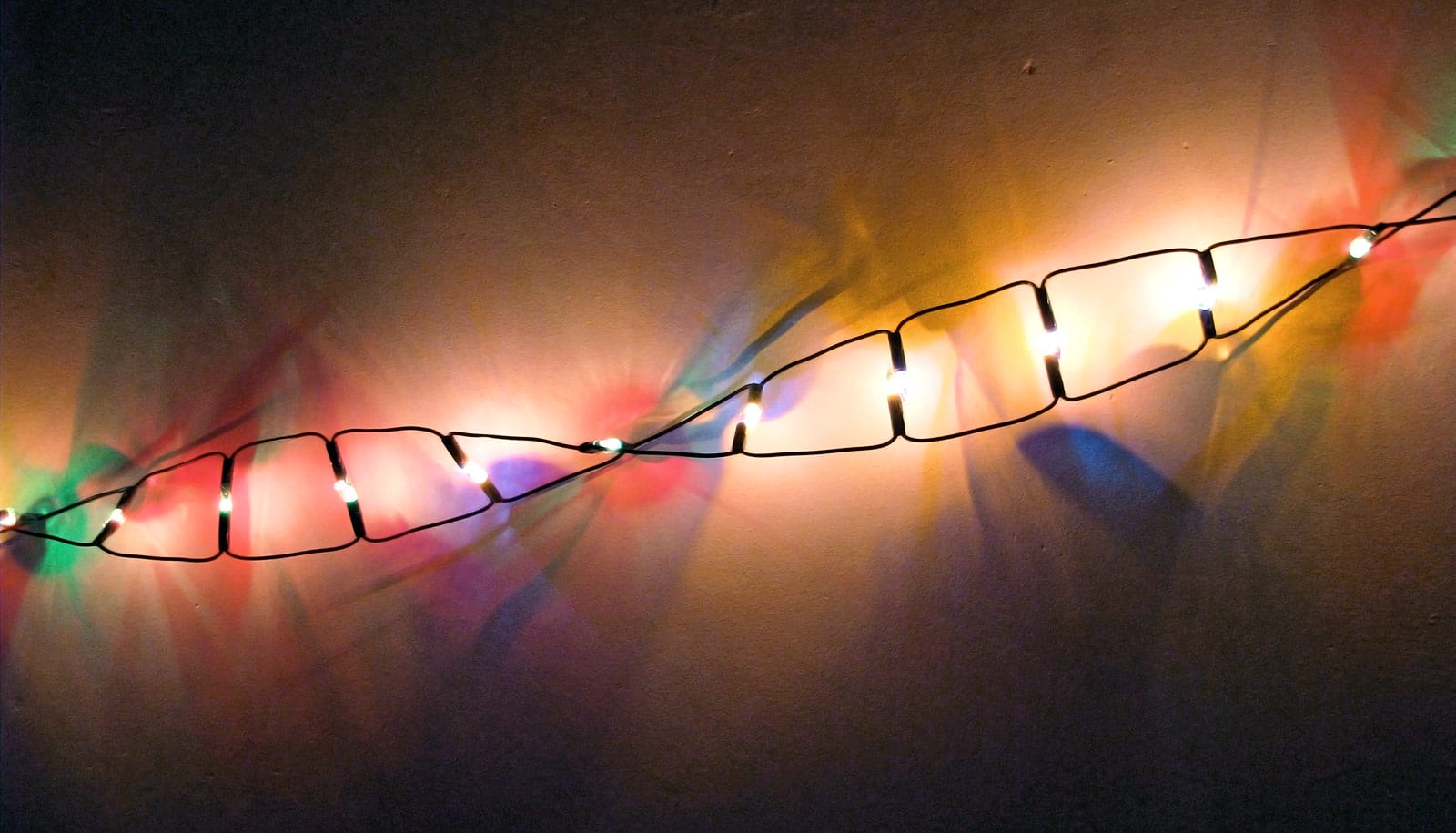For the first time, scientists have been able to watch individual steps in the replication of a single DNA molecule and found that the process contains much more randomness than previously thought.
Almost all life on Earth is based on DNA being copied, or replicated, and understanding how this process works could lead to a wide range of discoveries in biology and medicine.
“It’s a different way of thinking about replication that raises new questions,” says Stephen Kowalczykowski, professor of microbiology and molecular genetics at the University of California, Davis.
Using sophisticated imaging technology and a great deal of patience, the researchers were able to watch DNA from E. coli bacteria as it replicated and measure how fast enzyme machinery worked on the different strands.
How DNA replication works
The DNA double helix is made from two strands that run in opposite directions. Each strand is made of a series of bases, A, T, C, and G, that pair up between the strands: A to T and C to G.
The first step in replication is an enzyme called helicase that unwinds and “unzips” the double helix into two single strands. An enzyme called primase attaches a “primer” to each strand that allows replication to start, then another enzyme called DNA polymerase attaches at the primer and moves along the strand adding new “letters” to form a new double helix.
“It’s a real paradigm shift, and undermines a great deal of what’s in the textbooks…”
Because the two strands in the double helix run in opposite directions, the polymerases work differently on the two strands. On one strand—the “leading strand”—the polymerase can move continuously, leaving a trail of new double-stranded DNA behind it. But on the other, “lagging strand,” the polymerase has to move in starts, attaching, producing a short stretch of double stranded DNA, then dropping off and starting again.
Conventional wisdom is that the polymerases on the leading and lagging strands are somehow coordinated so that one does not get ahead of the other. If that did happen, it would create stretches of single-stranded DNA that are highly susceptible to damaging mutations.
‘Banners in the breeze’
To carry out their experiment, the researchers used a circular piece of DNA, attached to a glass slide by a short tail. As the replication machinery rolls around the circle, the tail gets longer.
They could switch replication on by adding chemical fuel (nucleoside triphosphates, NTPs) and used a fluorescent dye that attaches to double-stranded DNA to light up the growing strands.
Finally, the whole set up is in a flow chamber, so the DNA strands stretch out like banners in the breeze.
‘A real paradigm shift’
Once the researchers started watching individual DNA strands, they noticed something unexpected. Replication stops unpredictably, and when it starts up again, can change speed.
“The speed can vary about tenfold,” Kowalczykowski says.
Sometimes the lagging strand synthesis stops, but the leading strand continues to grow. This shows up as a dark area in the glowing strand, because the dye doesn’t stick to single-stranded DNA.
“We’ve shown that there is no coordination between synthesis of the two strands. They are completely autonomous,” Kowalczykowski says.
DNA acts like electrical wire to replicate itself
What looks like coordination is actually the outcome of a random process of starting, stopping, and variable speeds. Over time, any one DNA polymerase will move at an average speed; look at a number of DNA polymerases synthesizing DNA strands over time, and they will have the same average speed.
Kowalczykowski likens it to traffic on a freeway.
“Sometimes the traffic in the next lane is moving faster and passing you, and then you pass it. But if you travel far enough you get to the same place at the same time,” he explains.
The researchers also found a kind of “dead man’s switch” or automatic brake on the helicase, which unzips DNA ahead of the rest of the enzymes.
When polymerase stops, helicase can keep moving, potentially opening up a gap of unwound DNA that could be vulnerable to damage. In fact, exposed single-strand DNA sets off an alarm signal inside the cell that activates repair enzymes.
But it turns out that when it gets uncoupled and starts to run away from the rest of the replication complex, helicase slows down about fivefold. So it can chug along until the rest of the enzymes catch up, then speed up again.
This new stochastic view is a new way of thinking about DNA replication and other biochemical processes, Kowalczykowski says.
“It’s a real paradigm shift, and undermines a great deal of what’s in the textbooks,” he says.
Team gets closer look at DNA ‘copy machine’
A paper outlining the research appears in the journal Cell. Additional coauthors are from University of California, Davis and the Sloan Kettering Cancer Center. The National Institutes of Health supported this work through grants.
Source: UC Davis



